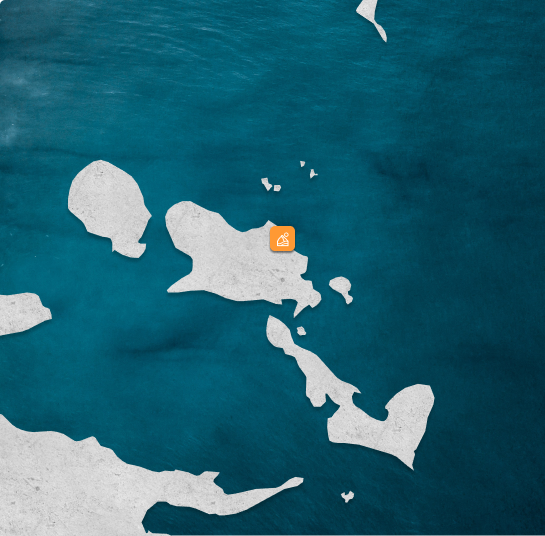The Floodlight at Indonesia Morowali Industrial Park stay on throughout the night. Around the clock, more than 40,000 workers operate the 8,000 acre site. which just ten years ago was nothing but dense rainforest on Sulawesi, Indonesia’s fourth largest island. Today, the sprawling park, which many refer to simply as “IMIP,” is home to a port, an airport, dormitories for Chinese workers, a four-star hotel and three mosques.
At its core, however, IMIP exists to smelt and refine at enormous scale a single mineral: nickel.
Long a key ingredient in stainless steel, nickel is increasingly wanted for the production of lithium ion batteries for electric vehicles. By 2040, the International Energy Agency estimates that clean energy technologies will account for as much as 70 percent of total nickel demand.
For Indonesia, this presents a huge opportunity: the country is already the world’s largest nickel miner, extracting almost half of the world’s supply in 2022, and it has now set its sights on becoming a major player in the EV supply chain.
IMIP stands as Indonesia’s proof that it can climb up the value chain of its abundant natural resources. Nearly a decade ago, the country embarked on a strategy of ‘resource nationalism’ when the government banned the export of unprocessed minerals, hoping to force foreign companies to invest in local smelting and refining. Back then, the move spooked foreign investors, driving major miners like Rio Tinto to exit the country.
But one foreign investor doubled down: Xiang Guangda, founder of the Chinese stainless steel producer Tsingshan Group.
Through a joint venture with a domestic mining company, Tsingshan invested billions starting in 2013 to build the industrial park in Morowali. IMIP is now one of Indonesia’s most important economic hubs, and Tsingshan, once a bit player struggling for relevance against China’s giant state-owned steelmakers, is the largest producer of stainless steel in the world.
It is also something of a gate-keeper for a large segment of Indonesia’s nickel industry, which presents a problem for the West.
Thanks to the immense success of IMIP and other industrial parks Tsingshan has stakes in, Chinese mining companies (including Zhejiang Huayou Cobalt and China Molybdenum) and Chinese battery makers (including CATL and GEM Co.) have followed Tsingshan’s lead. Over the last decade, China has invested more than $29 billion into the islands of Sulawesi and North Maluku1 — historically underdeveloped regions that are rich in nickel reserves. By contrast, Canada, the U.S. and Australia combined have invested less than $2 billion.
Chinese companies have also built much of the supporting infrastructure around Indonesia’s nickel refineries, effectively giving them control over who has access to them.
“The internet, roads, ports, logistics — most of these were built by Chinese companies,” explains Angela Tritto, an assistant professor at the University of Brunei Darussalam, adding that Tsingshan’s infrastructure footprint has also grown. “There are a lot of companies under the umbrella of Tsingshan. They have an energy subsidiary that runs the coal power plants, for example.”
Representatives for Tsingshan and IMIP did not respond to several requests for comment for this article.
Global investors, eager to secure their supply of one of the twenty-first century’s most critical minerals, are now scrambling to gain a foothold. In March, Ford announced it would invest in nickel processing in Sulawesi, and Indonesia’s investment minister says it will soon be joined there by Volkswagen. France’s Eramet and Germany’s BASF are also investing in Indonesian nickel processing for EV batteries.
“Indonesia is the Saudi Arabia of the global nickel market,” says Cullen Hendrix, a senior fellow at the Peterson Institute for International Economics. “Part of the motivation for Ford and other firms is that they are worried about the thin nature of this supply chain.”
A spokesperson for Ford told The Wire that its recent investment in Indonesia “will help make electric vehicle batteries even more affordable for even more customers.” But it’s unclear if that includes U.S. customers, in part because Ford’s project hinges on a partnership with a Chinese firm, Huayou Cobalt.
The U.S. passed the Inflation Reduction Act (IRA), which introduced tax credits for EVs that meet certain sourcing requirements, with the hope of reducing America’s dependence on Chinese firms. Because the U.S. and Indonesia lack a free trade agreement, cars that include Indonesian minerals are at risk of being precluded from eligibility for the tax credits. Indonesia recently proposed an agreement with the U.S., but the depth of Chinese involvement in Indonesia’s nickel industry could make it a nonstarter.
“Indonesia is going to be the largest nickel producer this decade, and [the U.S.] wants to stimulate sales of EVs,” says Henry Sanderson, author of Volt Rush: The Winners and Losers in the Race to Go Green. “That’s one of the fundamental contradictions of the IRA. It’s going to be hard for the U.S. to advance its climate and geopolitical goals at the same time.”
Especially since Chinese companies like Tsingsh an aren’t standing still. Sensing its future is in EVs, Tsingshan is preparing to publicly list a subsidiary, REPT Battero Energy Co., and intends to use the proceeds to rapidly build up battery production capacity. By expanding into the battery business, Tsingshan is poised to become unique among battery makers: with its operations at IMIP and battery plants in China, it will effectively control its entire supply chain, from mine to smelter to battery assembly line.2 As Sanderson notes, not even BYD, China’s top automaker, has that level of vertical integration.
“It would be really powerful if Tsingshan can succeed,” he says.
Source: The Wire China, May 7th 2023




